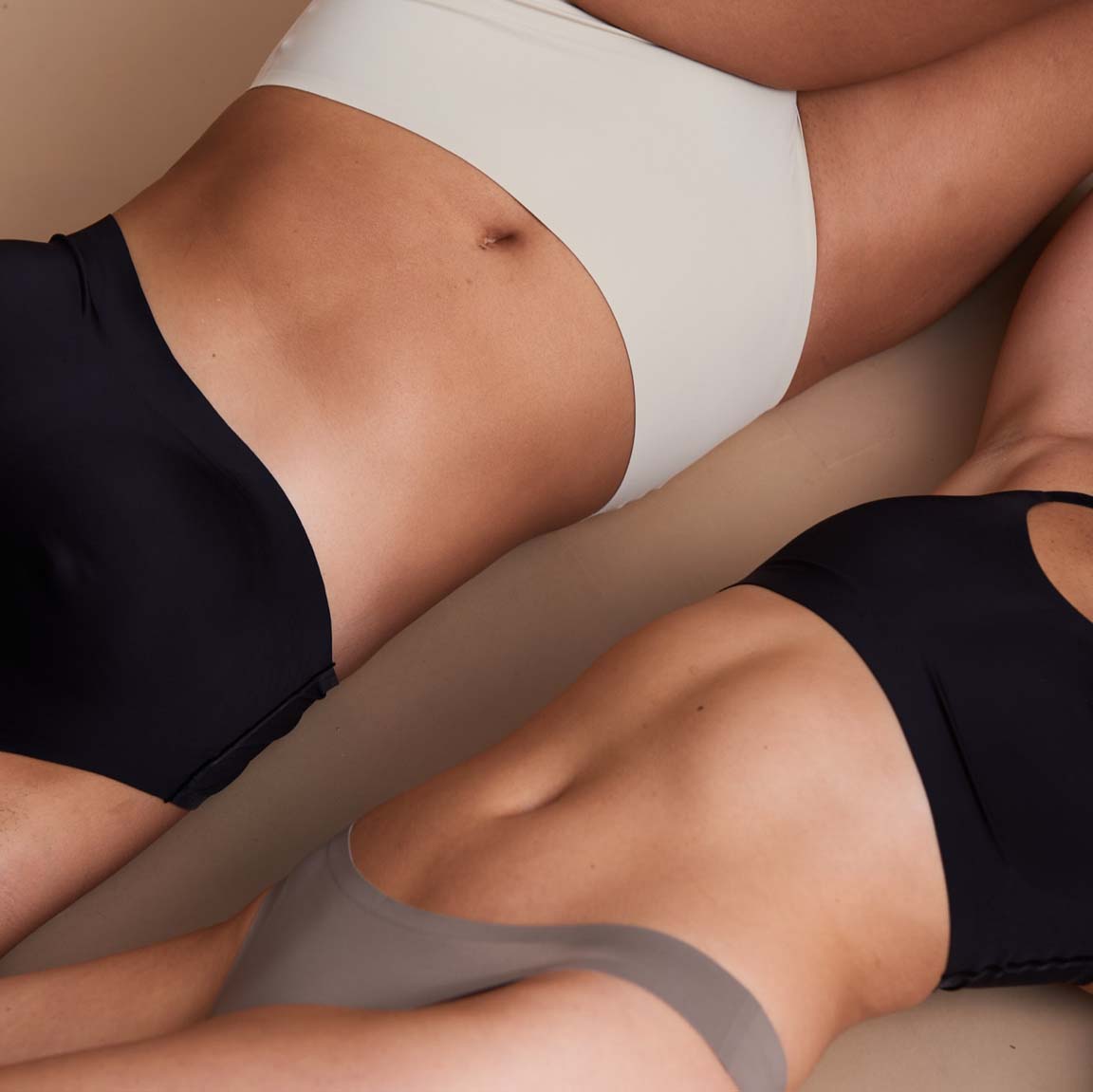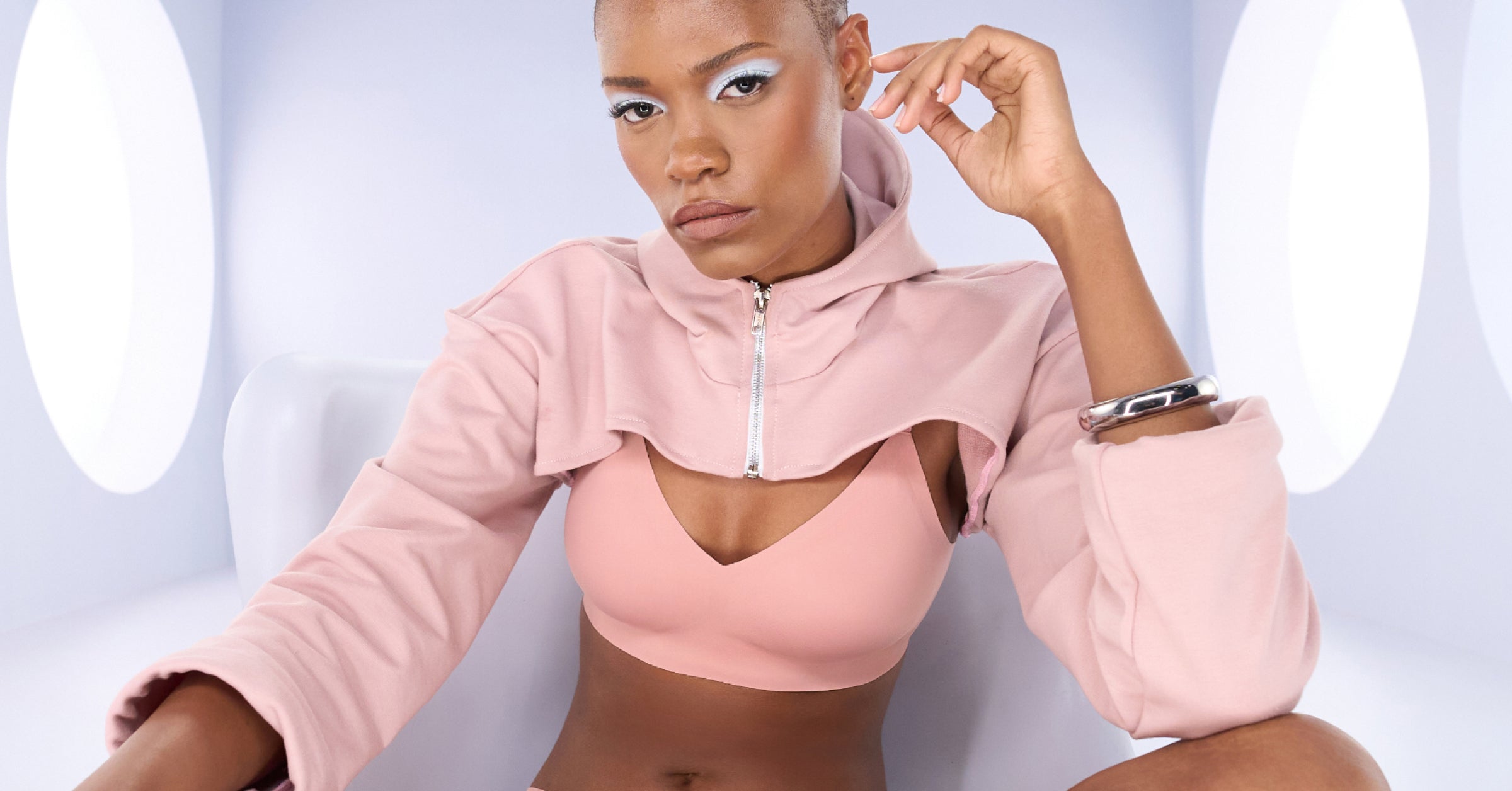Nowadays, we can have beautiful underwear delivered right to our doorstep, and can easily pull up from our drawers a nice, soft, and comfy pair of panties (Aka EBY’s), but it hasn’t always been like that. Underwear in ancient times wasn’t much of a choice- it was a necessity to keep intimate parts warm for both men and women; Even though this isn’t taught in schools, knowing where and how our undies came to help us understand the stigmas that surrounded it throughout history.
The role and meaning of underwear have shifted many times throughout history, and changed from inner to outerwear as society evolved- from a basic need to a luxury piece that indicated status, this journey has shaped what we know of underwear today and thankfully allowed us to comfortably wear our EBY’s.
When Was Underwear Invented?
The concept of wearing fabric to protect our intimate parts came around 5000 BC with cavemen and ancient Egyptians. In Austria, around 1991, archaeologists found in Egyptian tombs extra supplies of linen loincloths, some that indicated dignity, and in royalty cases, were believed to sustain Pharaohs and Queens to the afterlife. Who would have thought that undies would’ve had such power, right?
A Brief History of Undergarments
5000 B.C (H3)
Underwear actually started as an outer garment back in the 5000’s BC and appeared for cavemen and cavewomen as a small piece of fabric wrapped around the waist and through the leg called a loincloth. It was a basic necessity for protection, especially in colder areas of the world to conserve their intimate areas. Ancient Egyptians and Pharaohs also wore leather loincloths as outer garments and adopted fabric and length variations as a symbol of power and status.
Middle Ages
Even though women needed the same protection as men, they basically went commando until the 19th century, unbelievable right? Medieval men counted on male underwear, somewhat like the first prototype of boxer shorts and boxer briefs with elastic waistbands worn during the middle ages.
While women’s undergarments were multi-pieced structures, they didn’t include any fabric in their intimate parts. They featured constricting corsets, stiffened bodices, metal skirt structures, and occasionally woolen hosiery underdresses depending on cold climates.
For comfort purposes, they wore chemises as sleepwear and nothing else. Some dress structures tended to be bigger and bigger so many women didn’t have to take them out in order to “use the restroom” and get anything spilled on the fabric.
That of course was prioritized to women who belonged in royalty status, while in lower classes women wore poorly structured women’s underwear and struggled with hygiene conditions. Not the best time to be a woman, right?
The 1600s
Around the 1600s, men (especially royalty) started wearing 13 inch long shorts that somewhat relate to what we know as jockey briefs nowadays. Men’s underwear had tight lacing around their waist and ankles and were highly decorated with ribbons and different fancy fabrics, while women started to suffer more and more in the name of fashion, as lace-up bodices got tighter by the day to create an exaggerated flat chest-thin waist silhouette, wear uplift bras, but still- no panties.
The 19th century.
Have you ever wondered why we say “pair of underwear”? It’s because back in the early 1800s, women started wearing drawers: a trouser-like undergarment that consisted of a pair of separate legs that was joined at the waist and tightened around their ankles.
They started off with a basic design but became way more elaborate over time, decorated with lace, ribbons, and bands. However, they could not wear them to bed, as it was considered shameful for their husbands to see anything that belonged to their undergarments.
Throughout most of the century, these pieces were open between the legs to make going to the bathroom an easier journey, but thankfully by the end of it, women were introduced to pantaloons: long baggy trousers worn under dresses and skirts (finally some proper protection!)
The 1920s-1940s
By the time we got to the 1920s, we were already blessed with the introduction of proper lingerie. Even though the concept of panties basically meant industrial and plain pieces of fabric, thanks to the flappers and all their fringy and bobby-haired glamour, undergarments turned into tightly fitting underwear and started to become more decorative and less modest as they were worn under trendy short dresses at the time.
That evolved into the idea of a “pin-up girl” ( like the ones we know from cartoon characters) in the 1940s with the rise of apparel engineering and the modern bra, which made women pictured in lingerie become more acceptable, and pushed society to embrace female figures and their curves.
The 1950s
By the 1950’s we finally got what we needed: comfort! The Bikini came to life named after an island on the Pacific Ocean, with more flexible elastic waistbands and cotton fabrics, it evolved into being comfortable and cute, opening the doors for new comfy and trendy styles to come eventually.
Shop Eby’s bikini panties here.
The 1980s
The 1980s is when thongs made their first groundbreaking appearance. First gaining popularity in South America, they came to the US around 1981 and became extremely popular. Fitting perfectly into the 80’s aerobics culture and following along with leotards and tights, g strings were an absolute hit and introduced society to the concept of “sexy underwear”, which led men and women to start getting more comfortable with the idea of underwear being a powerful tool for sex appeal.
Also, underwear as outerwear from 5000 BC came full circle in the 80s, as stars such as Cher made appearances in g string bodysuits and two-piece sets on stage.
Shop EBY’s thong panties here.
The 2000s
By the 2000s underwear was almost pretty much as we know it to be, but the decade brought the innovative concept of shape-wear created by Spanx, where underwear comfort meets body shaping.
That encouraged women to embrace and mold their figures from inside their outfits, which is a groundbreaking concept that women worldwide adopt on a daily basis on multiple occasions. Besides shape-wear, there are many underwear styles that tend to focus on making women feel more comfortable with the shape of their bodies, such as the high waist and the high waisted thong.
The 2000s also took underwear sex appeal a step further with the rise of Calvin Klein and the near-naked models in stores advertising, opening the doors for a bigger market overall and bigger features in department stores.
Shop EBY’s high-waisted panties here.
Conclusion
Finally, all of those ups and downs in the history of underwear have brought us to today- when every underwear trend falls on the side of coziness.
Eby’s are made with the best possible fabrics to provide what we always deserved: comfort. Our seamless panties and bralettes come in many different styles and sizes to fit all bodies and occasions, being comfy and convenient for your daily life. After all, all these women before us didn’t struggle for nothing!
Eby’s subscription program allows you to get a variety of styles and colors from the seamless and most comfortable underwear history has ever seen delivered right to your doorstep! Subscribers get exclusive discounts and access to new releases, what are you waiting for to join us? History called!





